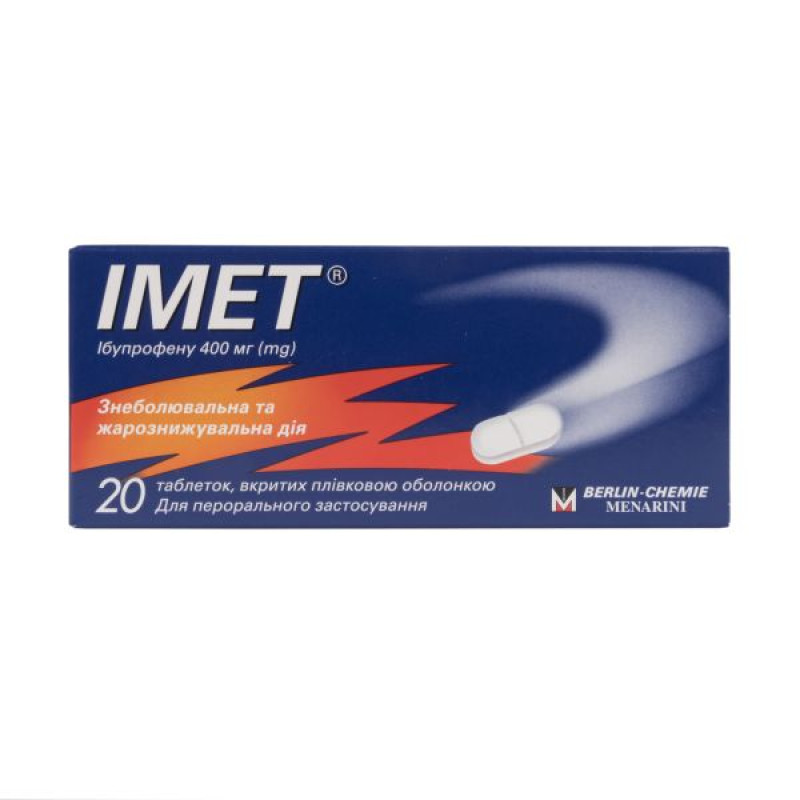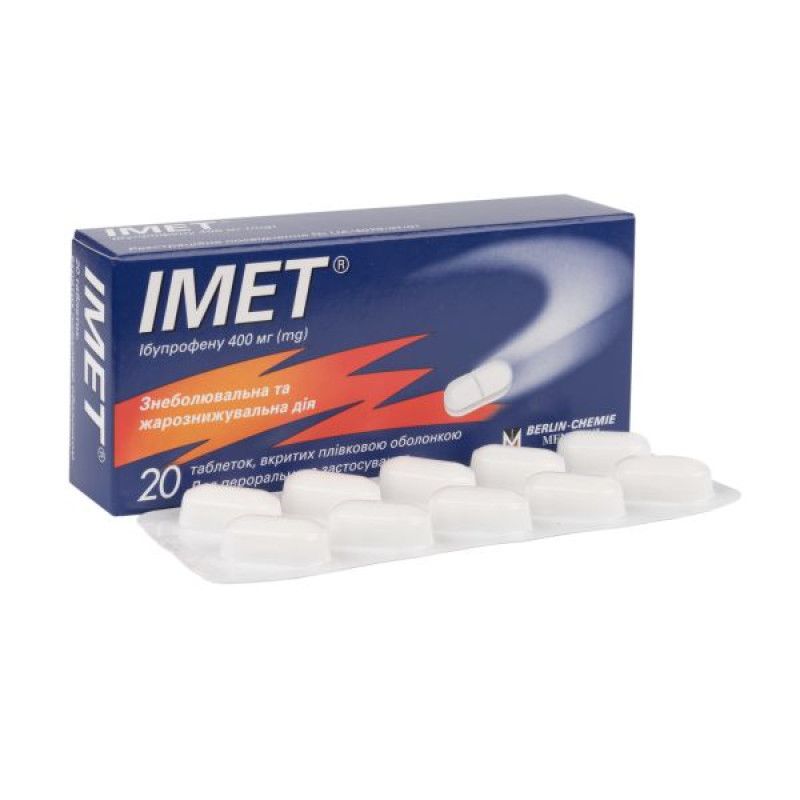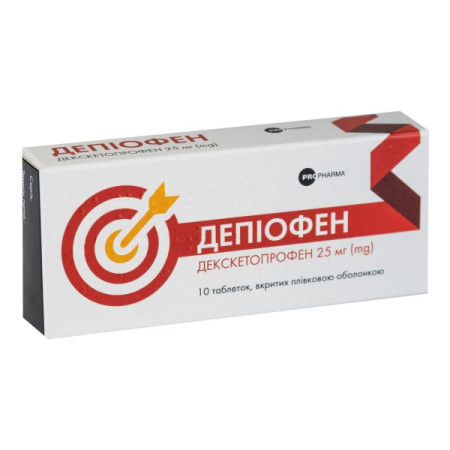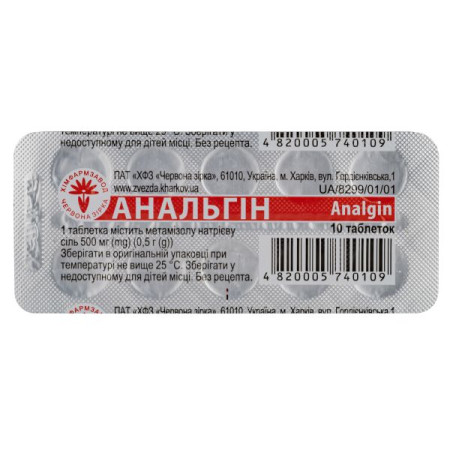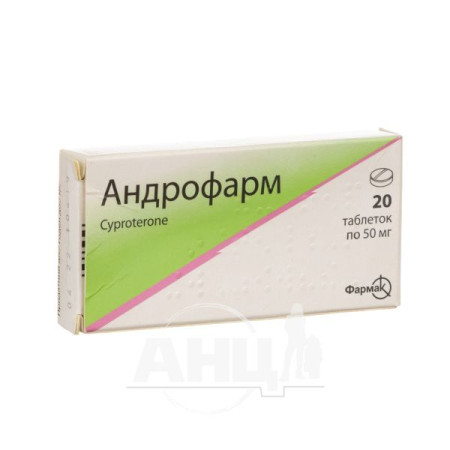Imet film-coated tablets 400 mg No. 20
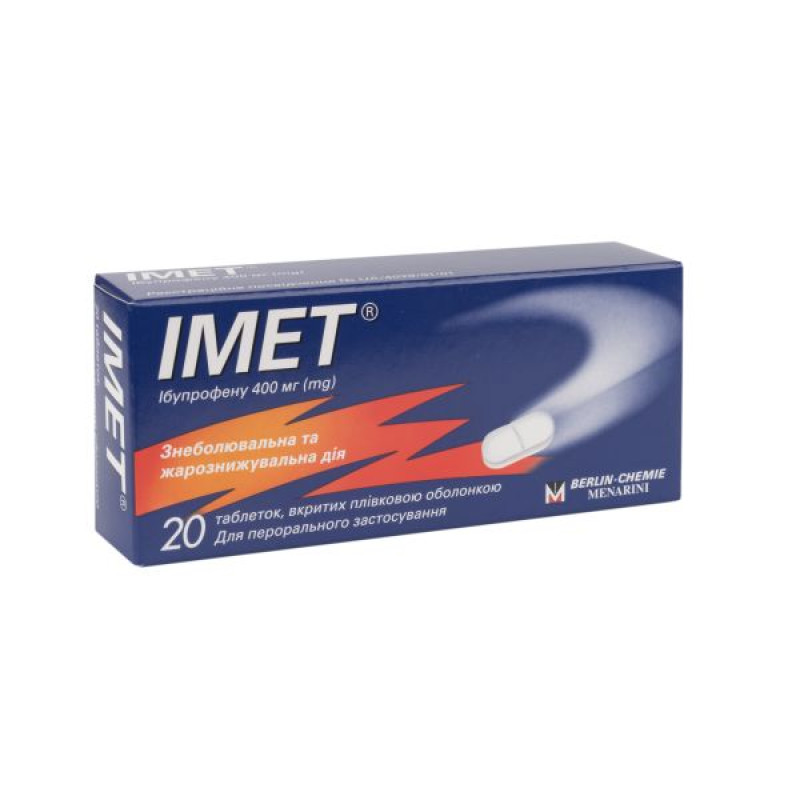
Instructions for Imet film-coated tablets 400 mg No. 20
Composition
active ingredient: 1 film-coated tablet contains 400 mg of ibuprofen;
Excipients: corn starch, colloidal anhydrous silicon dioxide, sodium starch glycolate (type A), magnesium stearate, hypromellose, polyethylene glycol 4000, povidone (K 30), titanium dioxide (E 171).
Dosage form
Film-coated tablets.
Main physicochemical properties: white or almost white, oblong tablets, film-coated, with a score line on both sides and embossed with "E" on both sides of the score line on the upper side.
Pharmacotherapeutic group
Nonsteroidal anti-inflammatory and antirheumatic drugs. Propionic acid derivatives.
ATX code M01A E01.
Pharmacological properties
Pharmacodynamics
Ibuprofen is a nonsteroidal anti-inflammatory drug (NSAID), a propionic acid derivative, which exerts a directed effect against pain, fever, and inflammation by inhibiting the synthesis of prostaglandins, mediators of pain and inflammation. In addition, ibuprofen reversibly inhibits platelet aggregation. Experimental data suggest that ibuprofen may inhibit the effect of acetylsalicylic acid (aspirin) at low doses on platelet aggregation when co-administered. However, the paucity of these data and the uncertainty regarding the applicability of the data obtained from ex vivo studies to clinical conditions suggest that definitive conclusions cannot be drawn regarding regular ibuprofen use, and that clinically significant effects are unlikely with irregular use.
Pharmacokinetics
Absorption
When taken orally, ibuprofen is partially absorbed in the stomach and then completely in the small intestine. When taken orally as an extended-release formulation, peak plasma concentrations are reached within 1-2 hours. When taken on an empty stomach, peak serum concentrations can be reached within 45 minutes after administration.
Distribution
Plasma protein binding is about 99%.
Biotransformation
Ibuprofen is metabolized in the liver (hydroxylation, carboxylation).
Breeding
Pharmacologically inactive metabolites are completely excreted mainly in the urine (90%) and also in the bile. The half-life in healthy people and patients suffering from liver and kidney diseases is 1.8-3.5 hours.
Linearity/nonlinearity
Linear kinetics of ibuprofen were observed at doses of 200 to 400 mg. Non-linear kinetics of the drug were observed at higher doses.
No significant differences in the pharmacokinetic profile are observed in elderly patients.
Indication
Symptomatic treatment of headaches, including migraines, toothaches, dysmenorrhea, neuralgia, back pain, joint pain, muscle pain, rheumatic pain, as well as symptoms of colds and flu.
Contraindication
Hypersensitivity to ibuprofen or to any of the components of the drug.
Hypersensitivity reactions (e.g. asthma, rhinitis, angioedema or urticaria) previously observed after taking ibuprofen, acetylsalicylic acid (aspirin) or other NSAIDs.
Gastric ulcer/bleeding in active form or history of recurrence (two or more severe episodes of ulcer or bleeding).
History of gastrointestinal bleeding or perforation associated with NSAID use.
Severe liver or kidney dysfunction; heart failure.
3rd trimester of pregnancy. (see section "Use during pregnancy or breastfeeding")
Cerebrovascular or other bleeding.
Disorders of hematopoiesis or blood clotting.
Interaction with other medicinal products and other types of interactions
Ibuprofen, like other NSAIDs, should not be used in combination with:
- aspirin, as this may increase the risk of adverse reactions, except when aspirin (dose not exceeding 75 mg per day) has been prescribed by a doctor;
- other NSAIDs, including selective cyclooxygenase-2 inhibitors, because the simultaneous use of several NSAIDs may increase the risk of gastrointestinal ulcers and bleeding due to a synergistic effect.
Ibuprofen should be used with caution in combination with:
Antihypertensives (ACE inhibitors and angiotensin II antagonists), beta-blockers and diuretics: NSAIDs may reduce the effect of diuretics and other antihypertensive drugs. In some patients with impaired renal function (e.g. dehydrated patients or elderly patients with compromised renal function), the concomitant use of an ACE inhibitor, beta-blocker or angiotensin II antagonist and drugs that inhibit cyclooxygenase may lead to further deterioration of renal function, including possible acute renal failure, which is usually reversible. Therefore, such combinations should be prescribed with caution, especially in elderly patients. If long-term treatment is necessary, the patient should be adequately hydrated and consideration should be given to monitoring renal function at the beginning of the combination treatment and periodically thereafter. Concomitant use of ibuprofen and potassium-sparing diuretics may lead to hyperkalemia. Diuretics may increase the risk of nephrotoxicity of NSAIDs.
Corticosteroids may increase the risk of ulcers and bleeding in the gastrointestinal tract.
Digoxin, phenytoin, lithium: Concomitant use of ibuprofen with digoxin, phenytoin or lithium may increase the plasma concentrations of these drugs. Monitoring of serum lithium, digoxin and phenytoin concentrations is not usually necessary when used correctly.
Methotrexate: Use of ibuprofen within 24 hours before or after administration of methotrexate may lead to increased concentrations of methotrexate and increased toxic effects.
Zidovudine: There is an increased risk of haematological toxicity when zidovudine is used concomitantly with NSAIDs. There is evidence of an increased risk of haemarthrosis and haematoma in HIV-infected patients with haemophilia when zidovudine is used concomitantly with ibuprofen.
Cardiac glycosides: NSAIDs may exacerbate cardiac dysfunction, reduce glomerular filtration rate, and increase plasma glycoside levels.
Antiplatelet agents and selective serotonin reuptake inhibitors: The risk of gastrointestinal bleeding may be increased.
Cyclosporine, tacrolimus: possible increased risk of nephrotoxicity.
Mifepristone: NSAIDs should not be used earlier than 8-12 days after mifepristone administration, as they reduce its effectiveness.
Quinolone antibiotics: Concomitant use with ibuprofen may increase the risk of seizures.
Sulfonylureas and phenytoin: Clinical studies have shown that NSAIDs interact with antidiabetic drugs (sulfonylureas). Although no interaction between ibuprofen and sulfonylureas has been described, it is recommended to monitor blood sugar levels as a precaution when these drugs are taken concomitantly.
Probenecid and sulfinpyrazone: medicines containing probenecid and sulfinpyrazone can delay the elimination of ibuprofen from the body.
Application features
Side effects associated with the use of ibuprofen and the entire group of NSAIDs in general can be reduced by using the minimum effective dose necessary to treat symptoms for the shortest period of time.
Effects on the cardiovascular and cerebrovascular systems
Patients with arterial hypertension and/or a history of mild to moderate congestive heart failure should be cautious when initiating long-term treatment (consultation with a doctor is necessary), as fluid retention, arterial hypertension and edema have been reported with ibuprofen therapy, as with other NSAIDs.
Clinical trial and epidemiological data suggest that the use of ibuprofen, especially at high doses (2400 mg/day), and long-term treatment may be associated with a small increased risk of arterial thrombotic events (e.g. myocardial infarction or stroke). Overall, epidemiological data do not suggest that low-dose ibuprofen (e.g. ≤ 1200 mg/day) may be associated with an increased risk of myocardial infarction.
In patients with uncontrolled hypertension, congestive heart failure, established ischemic heart disease, peripheral arterial disease and/or cerebrovascular disease, long-term treatment should only be prescribed by a physician after careful consideration. In patients with significant risk factors for cardiovascular complications (such as hypertension, hyperlipidemia, diabetes mellitus, smoking), long-term treatment with NSAIDs should only be prescribed after careful consideration.
Effects on the respiratory system
Bronchospasm may occur in patients who suffer from bronchial asthma or allergic diseases or have a history of these diseases.
Other NSAIDs
Concomitant use of ibuprofen with other NSAIDs, including selective cyclooxygenase-2 inhibitors, increases the risk of adverse reactions and should be avoided.
Ibuprofen should be used with caution in cases of systemic lupus erythematosus and mixed connective tissue diseases due to the increased risk of aseptic meningitis.
Effects on the kidneys
Long-term use of NSAIDs can lead to a dose-dependent decrease in prostaglandin synthesis and provoke the development of renal failure. Patients with impaired renal function, cardiac disorders, impaired liver function, patients taking diuretics, and elderly patients are at high risk of this reaction. In such patients, renal function should be monitored.
Effect on the liver
Liver dysfunction.
Impact on fertility in women
There is limited evidence that medicinal products that inhibit cyclooxygenase/prostaglandin synthesis may affect ovulation. This is reversible after discontinuation of treatment. Long-term use (at doses of 2400 mg/day and for treatment durations exceeding 10 days) of ibuprofen may impair female fertility and is not recommended in women attempting to conceive. In women who have difficulty conceiving or are undergoing investigation for infertility, the drug should be discontinued.
Effects on the gastrointestinal tract
NSAIDs should be used with caution in patients with chronic inflammatory bowel disease (ulcerative colitis, Crohn's disease) as these conditions may be exacerbated. Gastrointestinal bleeding, perforation, and ulceration, which may be fatal, have been reported at any time during NSAID treatment, regardless of the presence of warning symptoms or a history of severe gastrointestinal disorders.
The risk of gastrointestinal bleeding, perforation, and ulceration increases with increasing doses of NSAIDs in patients with a history of ulcer, especially if complicated by bleeding or perforation, and in elderly patients. These patients should start treatment with the lowest dose. Caution should be exercised when treating patients receiving concomitant medications that may increase the risk of gastrotoxicity or bleeding, such as oral corticosteroids or anticoagulants (e.g. warfarin) or antiplatelet agents (e.g. aspirin). In these patients, as well as in patients requiring concomitant low-dose acetylsalicylic acid (aspirin) or other medications that may increase the risk for gastrointestinal bleeding, the physician should consider prescribing combination therapy with misoprostol or proton pump inhibitors.
Patients with a history of gastrointestinal disorders, especially elderly patients, should be informed of any unusual gastrointestinal symptoms (predominantly bleeding), especially gastrointestinal bleeding at the beginning of treatment. In the event of gastrointestinal bleeding or ulceration in patients receiving ibuprofen, treatment should be discontinued immediately.
On the skin and subcutaneous tissue.
Very rarely, severe skin reactions, including exfoliative dermatitis, Stevens-Johnson syndrome and toxic epidermal necrolysis, may occur with NSAIDs. The risk of these reactions is highest early in therapy, with the majority of cases occurring within the first month of treatment. Ibuprofen should be discontinued at the first sign of skin rash, mucosal lesions or any other sign of hypersensitivity.
Especially careful monitoring by a doctor is necessary immediately after major surgical interventions.
With prolonged use of ibuprofen, regular checks of liver function, kidney function, and blood tests are required.
Prolonged use of any painkiller used for headaches may lead to its exacerbation. In such a situation, the patient should consult a doctor and treatment should be discontinued. A diagnosis of medication overuse headache can be assumed in patients who have frequent or daily headaches despite or as a result of regular painkillers.
In exceptional cases, chickenpox can cause serious infectious complications of the skin and soft tissues. It is currently impossible to completely exclude the possibility of a relationship between the use of NSAIDs and the development of such infectious diseases. Therefore, the use of ibuprofen in case of chickenpox should be avoided.
When drinking alcohol during treatment with NSAIDs, the risk of adverse reactions related to the active substance may increase, in particular, from the gastrointestinal tract or central nervous system.
Use during pregnancy or breastfeeding
Inhibition of prostaglandin synthesis may adversely affect pregnancy and/or embryonal/fetal development. Epidemiological data indicate an increased risk of miscarriage and birth defects after exposure to prostaglandin synthesis inhibitors in early pregnancy. The risk is believed to increase with increasing dose and duration of therapy. NSAIDs should not be used during the first two trimesters of pregnancy or during labour unless the potential benefit to the patient outweighs the potential risk to the foetus. In the third trimester of pregnancy, exposure to any prostaglandin synthesis inhibitor may cause foetal effects such as cardiopulmonary toxicity (premature closure of the ductus arteriosus with pulmonary hypertension) and renal impairment, which may progress to renal failure with oligohydramnios. Ibuprofen is contraindicated in the third trimester of pregnancy due to the possibility of suppressing uterine contractility, which may lead to an increase in the duration of labor with a tendency to increase bleeding in the mother and child, even when using low doses.
In studies, small amounts of ibuprofen have been found in breast milk. NSAIDs are not recommended for use during breastfeeding, if possible.
Ability to influence reaction speed when driving vehicles or other mechanisms
When used in accordance with the recommended doses and duration of treatment, the drug does not affect the speed of reaction when driving or operating other mechanisms. Patients who experience dizziness, drowsiness, disorientation or visual disturbances while taking NSAIDs should refrain from driving or operating mechanisms. These phenomena are exacerbated when the drug is combined with alcohol.
Method of administration and doses
For oral administration for short-term use.
Adults and children over 12 years of age. Take 1 tablet every 4 hours. Swallow the tablets whole with plenty of liquid, during or after meals. Do not take more than 3 tablets in 24 hours. The maximum daily dose is 1200 mg.
The minimum effective dose should be used for the shortest possible period necessary to relieve symptoms.
If complaints persist for more than 3 days in children and more than 4 days when treating pain in adults, the patient should consult a doctor.
Patients with sensitive stomachs are recommended to take Imet® with meals.
Elderly patients do not require special dosage.
Patients with mild or moderate renal and hepatic impairment do not require dose adjustment.
Children
Do not use in children under 12 years of age.
Overdose
In children, the use of more than 400 mg/kg of ibuprofen can cause symptoms of intoxication. In adults, the dose-response effect is less pronounced. The half-life in overdose is 1.5-3 hours.
Symptoms. In most patients in clinical trials, the use of significant amounts of NSAIDs caused only nausea, vomiting, epigastric pain or, very rarely, diarrhea. Tinnitus, headache, dizziness and gastrointestinal bleeding may also occur. In more severe poisoning, toxic lesions of the central nervous system may occur, which manifest as drowsiness, nystagmus, visual disturbances, sometimes - an excited state and disorientation or coma. Sometimes patients experience convulsions. In severe poisoning, hyperkalemia and metabolic acidosis, acute renal failure, liver damage, arterial hypotension, respiratory failure and cyanosis may occur. In patients with bronchial asthma, exacerbation of the course of asthma may occur.
Treatment: Treatment should be symptomatic and supportive, and include maintaining a patent airway and monitoring vital signs until the condition returns to normal. Oral administration of activated charcoal or gastric lavage is recommended within 1 hour of ingestion of a potentially toxic dose. If ibuprofen has already been absorbed, alkaline agents may be administered to accelerate the excretion of acidic ibuprofen in the urine.
Adverse reactions
The most common adverse reactions are gastrointestinal in nature and are mostly dose-related. Adverse reactions are least common when the maximum daily dose is 1200 mg.
Adverse reactions occurring with ibuprofen, as with other NSAIDs, are classified by organ system and frequency of occurrence: very common: >1/10; common: >1/100 - <1/10; uncommon: >1/1000 - <1/100; rare: >1/10000 - <1/1000; very rare: <1/10000 and unknown (cannot be estimated due to limited data available).
From the side of the cardiac system.
Very rare: palpitations, heart failure, myocardial infarction.
From the digestive tract.
Sometimes: gastrointestinal ulcers with the possibility of bleeding and perforation (sometimes fatal, especially in elderly patients). Ulcerative stomatitis, exacerbation of colitis and Crohn's disease, gastritis.
Very rare: esophagitis, pancreatitis, formation of diaphragmatic intestinal strictures.
Not known: dyspepsia, melena, haematemesis, jaundice.
From the nervous system.
Uncommon: central nervous system disorders such as headache, dizziness, insomnia, agitation, irritability or fatigue;
very rare: aseptic meningitis, some symptoms of which (rigidity of the occipital muscles, headache, nausea, vomiting, fever or disorientation) may occur in patients with existing autoimmune diseases such as systemic lupus erythematosus, mixed connective tissue disease;
not known: paresthesia, drowsiness.
On the part of the kidneys and urinary system.
Very rare: acute renal failure, edema, papillary necrosis, especially with prolonged use, associated with increased blood urea and edema; unknown: renal failure, nephrotoxicity, including interstitial nephritis and nephrotic syndrome.
From the liver.
Very rare: liver dysfunction, liver damage, especially with long-term therapy, liver failure, acute hepatitis.
From the vascular system.
Very rare: arterial hypertension. Not known: arterial thrombosis (myocardial infarction or stroke).
On the skin and subcutaneous tissue.
Rare: various skin rashes; very rare: severe forms of skin reactions such as Stevens-Johnson syndrome, erythema multiforme and toxic epidermal necrolysis; unknown: photosensitivity.
From the blood and lymphatic system.
Very rare: anemia, leukopenia, thrombocytopenia, pancytopenia, agranulocytosis, which may occur with prolonged treatment, the first signs of which are fever, sore throat, superficial ulcers in the mouth, flu-like symptoms, severe exhaustion, unexplained bleeding and bruising.
From the psychological side.
Not known: only with long-term use: depression, hallucinations, confusion.
From the organs of vision.
Uncommon: with prolonged treatment, visual disturbances and optic neuritis may occur.
From the side of the hearing organs.
Rare: with prolonged treatment, ringing in the ears and dizziness are possible.
From the immune system.
Uncommon: hypersensitivity reactions accompanied by skin rash, urticaria and itching, as well as asthma attacks (in some cases with a decrease in blood pressure).
Very rare: severe hypersensitivity reactions, symptoms of which may include swelling of the face, tongue and larynx, dyspnoea, tachycardia, hypotension, anaphylactic reactions, angioedema or severe shock; not known: airway reactivity including bronchial asthma, exacerbation of asthma, bronchospasm.
Infections and invasions.
Very rare: Exacerbations of infections associated with inflammation (e.g. development of necrotizing fasciitis) have been described in association with the use of non-steroidal anti-inflammatory drugs. This may be related to the mechanism of action of non-steroidal anti-inflammatory drugs.
If signs of infection occur or worsen during treatment, the patient should seek immediate medical attention. It should be checked whether anti-infective/antibacterial therapy is indicated.
Very rarely, symptoms of aseptic meningitis, such as stiff neck, headache, nausea, vomiting, fever or confusion, have been observed during treatment with ibuprofen. Patients with autoimmune diseases (systemic lupus erythematosus, mixed collagen disease) are prone to the development of such conditions.
General violations.
Malaise and increased fatigue.
Laboratory studies.
Very rare: decreased hemoglobin level.
Expiration date
3 years.
Do not use the drug after the expiration date indicated on the package.
Storage conditions
No special storage conditions are required. Keep out of the reach of children.
Packaging
10 tablets in a blister; 1 or 2 or 3 blisters in a cardboard box.
Vacation category
Without a prescription.
Producer
BERLIN-CHEMI AG.
Location of the manufacturer and its business address
Glienicker Weg 125, 12489 Berlin, Germany.
There are no reviews for this product.
There are no reviews for this product, be the first to leave your review.
No questions about this product, be the first and ask your question.







